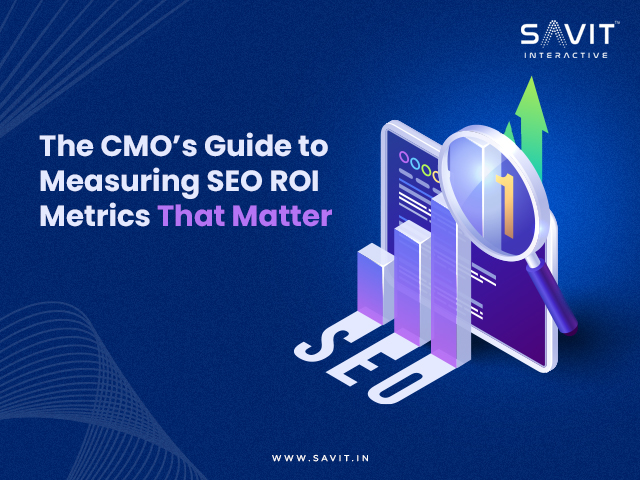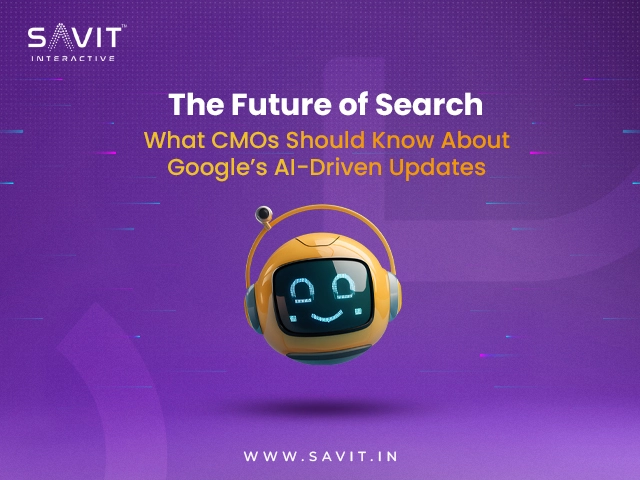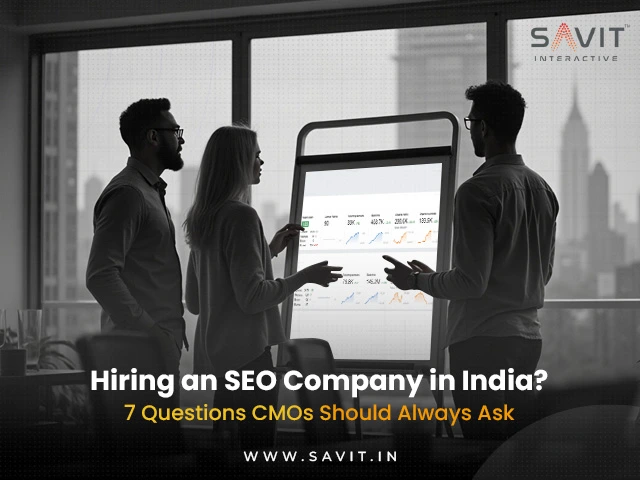Within the boardroom, SEO has evolved beyond rankings and traffic. It’s about tangible business growth, revenue generation, and brand equity today. For CMOs, decoding the performance of SEO services through the right metrics is critical not just for strategic alignment, but for effectively communicating ROI in terms the C-suite understands. Here’s a comprehensive guide to SEO KPIs that matter most when driving measurable outcomes.
Why Traditional SEO Metrics Aren’t Enough?
Early SEO reporting revolved around rankings and traffic volume. However, those metrics alone rarely reflect business value. For instance, a 41% dip in organic traffic might not impact revenue if remaining visitors are more qualified and convert better. CMOs must shift focus to KPIs that directly connect SEO to bottom-line impact—think revenue, lead quality, and growth.
Core SEO ROI Metrics for CMOs
1. Organic Revenue & Conversions
- What to Track: Revenue generated and conversions (sales, leads, sign-ups) via organic search.
- Why It Matters: This reflects SEO’s direct contribution to business growth. If an SEO investment of ₹5,00,000 yields ₹20,00,000 in revenue, the ROI stands at 300%.
- How to Track: Use GA4, CRM systems, and e-commerce tracking to attribute revenue to organic sessions.
- Stat: Businesses aligning SEO with revenue targets are 2.5x more likely to experience above-average growth.
2. Customer Lifetime Value (CLV) from Organic Search
- What to Track: Total lifetime revenue from customers acquired via SEO.
- Why It Matters: CLV highlights long-term SEO impact beyond one-time sales.
- How to Track: Connect CRM and analytics platforms to monitor CLV for SEO-acquired customer cohorts.
3. Cost Per Acquisition (CPA) via SEO
- What to Track: The average cost to acquire each customer through organic traffic.
- Why It Matters: Comparing SEO CPA to other channels validates its cost efficiency.
- How to Track: Divide total SEO spend by the number of customers acquired organically.
4. Organic Traffic Value
- What to Track: Estimated ad cost to acquire the same organic traffic volume.
- Why It Matters: Demonstrates SEO’s value in paid media terms, easily grasped by the C-suite.
- Example: If 50,000 organic visits cost ₹1,12,500 via paid ads (at ₹2.25 CPC), that’s SEO’s “free” value.
- How to Track: Use SEMrush or Ahrefs to assess traffic value by CPC.
5. Share of Voice (SOV) in Search
- What to Track: Your share of visibility for strategic keywords against competitors.
- Why It Matters: SOV indicates competitive strength and authority in organic search.
- How to Track: SEMrush provides SOV data for branded and generic keywords.
6. Conversion Rate from Organic Traffic
- What to Track: The percentage of visitors from organic search who convert.
- Why It Matters: High conversion signals SEO is targeting the right audience and that landing pages are optimized.
- How to Track: Set up goal/conversion tracking in GA4 and segment by landing page and keyword.
7. Lead Quality and Pipeline Attribution
- What to Track: SEO-driven lead quality and their progress through the sales pipeline.
- Why It Matters: Helps CMOs evaluate whether SEO generates sales-ready leads, not just form fills.
- How to Track: Integrate CRM systems with web analytics to track organic-origin leads to closed deals.
8. Engagement Metrics: Bounce Rate, Dwell Time, Pages per Session
- What to Track: User interaction indicators—time spent, depth of navigation, and bounce rate.
- Why It Matters: Strong engagement suggests content relevance and UX effectiveness.
- How to Track: GA4 offers detailed engagement tracking and comparisons by source.
9. Core Web Vitals and Technical Health
- What to Track: Page load speed, layout shift, and interactivity (LCP, CLS, INP).
- Why It Matters: Google uses Core Web Vitals as ranking factors; they also shape user experience.
- How to Track: Use Google Search Console, Lighthouse, and PageSpeed Insights.
10. Backlink Quality and Authority
- What to Track: Referring domains and the quality of inbound links.
- Why It Matters: Backlinks remain a core SEO factor—quality over quantity drives trust and authority.
- How to Track: Use SEMrush or Ahrefs to audit backlinks and assess domain ratings.
How to Calculate SEO ROI
- Formula:
- SEO ROI = × 100
- Example:
- Revenue: ₹12,00,000
- Cost: ₹2,00,000
- ROI: × 100 = 500%
Real-World Example: SEO ROI in Action
- A SaaS company invested ₹4,00,000 in SEO. Within six months, it generated ₹18,00,000 in annual recurring revenue through SEO-attributed leads.
- ROI: × 100 = 350%
- CPA via SEO was 60% lower than paid channels
- SEO-acquired customers had 25% higher CLV than paid media leads
Best Practices for CMOs: Making SEO Metrics Boardroom-Ready
- Tie SEO metrics to revenue goals: Highlight performance through leads, deals, and growth, not just traffic.
- Leverage attribution modeling: Use CRM-integrated insights to map SEO efforts to sales outcomes.
- Benchmark against competitors: Track Share of Voice and Organic Traffic Value to gauge SEO strength.
- Report insights, not just data: Translate analytics into narratives aligned with strategic priorities.
- Optimize continuously: Let real-time conversion and engagement data drive UX, content, and technical refinements.
SEO has moved from being a traffic engine to a measurable growth driver. For CMOs, aligning SEO KPIs with revenue, pipeline, and customer value is the key to justifying investment and guiding decision-making.
At Savit Interactive, best SEO company in India, we help brands turn SEO into a revenue-generating engine—one metric at a time. From strategy to reporting, we ensure your SEO performance translates into numbers that impress the boardroom and support business expansion.



